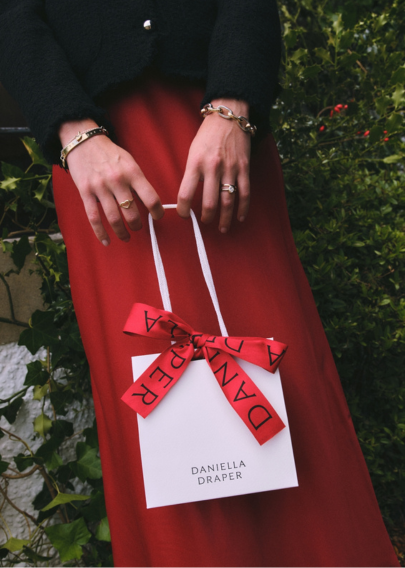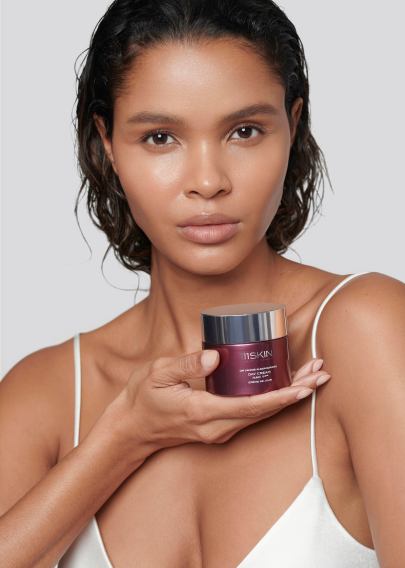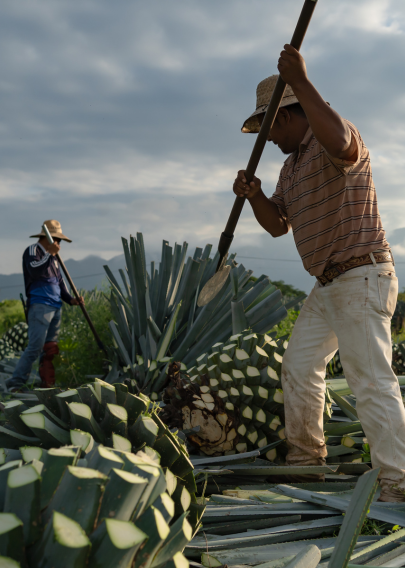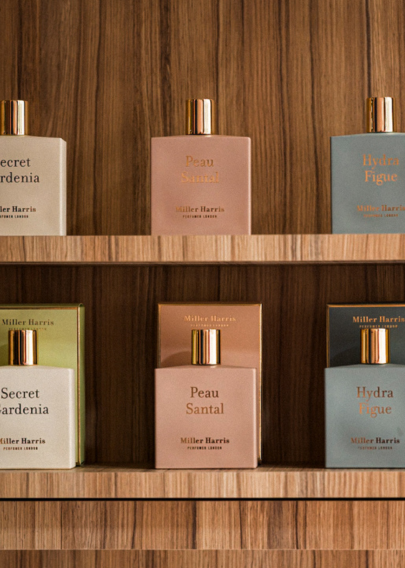Mejuri has captured global attention with its commitment to craftsmanship, style and responsible sourcing. Recognising that sustainability is a journey, Mejuri recently undertook Butterfly Mark certification to strengthen positive change within its communities and the environment – and get external verification that they are meeting our internal commitments. In this Sustainability Spotlight, we speak with Holly McHugh, VP of Sustainability & Social Impact, to uncover one of Mejuri’s most groundbreaking projects – its collaboration with RESOLVE’s Regeneration initiative and the introduction of Salmon Gold. Discover how the partnership is transforming abandoned mine sites into sources of valuable minerals and restoring natural habitats, and how by reprocessing mine waste to produce fully traceable gold while contributing to environmental restoration, Mejuri’s Salmon Gold initiative is pioneering sustainable practices in fine jewellery.
. . .
Hi Holly! Can you tell us about Mejuri and how it all began?
Since 2015, Mejuri has been turning fine jewellery into an everyday luxury, inspiring their community to celebrate what matters most to them. Feeling disconnected from an industry that typically markets to men, CEO and Co-Founder Noura Sakkijha leveraged her learnings as a third-generation jeweller to redefine how we think of and purchase fine jewellery. Mejuri works with trusted suppliers to design pieces with craftsmanship, responsible sourcing and style at its core. Mejuri has expanded to become a global brand with over 640 employees – 79% of whom identify as women – 34 stores, two million customers, and celebrity fans, including Selena Gomez, Ariana Grande, Billie Eilish, and Nicola Coughlan.
How would you summarise Mejuri’s mission and values? How do sustainability practices fit into the brand’s ethos?
Mejuri is on a mission to redefine luxury and make it accessible for everyone – while working towards making a positive impact in our industry and beyond. We believe that luxury can be synonymous with sustainability and that bold targets will move us closer to achieving this goal. We prioritise working with suppliers independently certified by recognised standards-setting organisations, focusing on health and safety, human rights, fair labour, governance, and environmental protection. We’re committed to expanding transparency about our trusted supplier networks to help ensure we continue to create a positive impact through the manufacturing of our fine jewellery. Our commitments to traceability and circularity are ambitious but also crucial, and our methodology for determining progress is just the beginning of a roadmap for achieving them. We won’t pretend to have all the answers today; this is a journey. We’re navigating through the complexities as we progress, and each step brings us closer to our goals. Recognising the power of collaboration, we’re also teaming up with industry partners to drive broader, industrywide change.
What is RESOLVE’s Regeneration initiative and how did Mejuri come to partner with them?
Last year, we announced a $1.5M dollar commitment to RESOLVE’s Regeneration, a revolutionary new start-up that uses the re-mining and processing of waste from legacy mine sites to support rehabilitation activities and restore natural environments. In North America alone there are over 500,000 of similar abandoned mine sites that continue to hold necessary minerals in their waste piles. If left untreated, these abandoned mines pollute sensitive watersheds, ecosystems and native species. Regeneration is reversing the effects of past industrial demands, which altered the flow of rivers, disrupted natural habitats that were vital for the fish populations and left unsecured tailings.
Regeneration utilises modern, efficient mining practices to extract these valuable minerals from mine tailings, wasterock, and water surrounding these sites, helping to clean and restore the environment while attaining minerals in a far more eco-friendly fashion. Mine waste holds minerals used across industries, which is why this is a multi-industry collaboration with technology, mining and the jewellery sector. Additionally many of these mine sites hold minerals necessary for the energy transition which further enhances the multi-sector potential of this initiative. Earnings from the sale of these responsibly-sourced materials are reinvested to facilitate habitat restoration and mine closure activities, including legacy and former mine sites. In addition, Regeneration will seek to create and trade biodiversity and carbon credits through the rehabilitation of land and the generation of environmental offsets. Regeneration’s unique approach to this problem engages local communities, governments and miners to build trust and develop a new vision for the land after remining and restoration. Going beyond closure commitments and government mandates, Regeneration restores and renews biological and ecological systems, such as forests, streams and wetlands. They document restoration processes, methods and impact, producing quantifiable biodiversity and carbon value, including credits. Nearby and downstream communities benefit when degraded lands are transformed into greener, more natural spaces.

Can you tell us about Salmon Gold and how it differs from traditional gold-sourcing methods?
Salmon Gold is an innovative initiative in that it comes from very specific sites where mine waste is being reprocessed which allows us to purchase fully traceable gold from its origins, whilst also contributing positively to the environment through habitat restoration. The journey of our Salmon Gold collection begins at the legacy mines in North America. It is then refined at Produits Artistiques Métaux Précieux (PAMP), a Swiss company renowned for its expertise in refining and minting precious metals. At PAMP the gold is individually batch refined to maintain full traceability while ensuring purity of the gold. Finally, the gold is formed into small grains to prepare it for the casting process. Following this meticulous process, the gold grain is transported to Thailand, where one of our key trusted manufacturing partners meticulously crafts a unique collection that uses only gold refined from this process. This initiative marks the beginning of a series of annual capsule collections in 14k gold, each featuring the Regeneration logo, signifying our commitment to sustainability and environmental restoration. Our partnership is not just a business alliance – it’s a significant step toward a more sustainable and innovative industry.
What are the environmental benefits of Salmon Gold?
This initiative produces gold while restoring vital habitats for salmon and other wild species across Alaska, the Yukon Territory, and British Columbia. Salmon Gold connects biodiversity and environment to our industry in a way that has not been done before. Traditionally, a company’s biodiversity and environmental initiatives are difficult to connect to industry operations and supply chains. We’re challenging that norm as Regeneration’s sole founding partner in jewellery. Going beyond collaboration, Mejuri is contributing to the development of initiatives that promote habitat restoration and have integrated gold extracted from the remining of mine tailings into our jewellery product – bringing Regeneration gold directly to our customers. It’s more than just a material: it symbolises how luxury and sustainability can go hand-in-hand. As we have the opportunity to increase our sourcing of Salmon Gold, we will be able to achieve higher levels of traceability within our precious metals whilst also contributing to habitat restoration along the way.
What about the environmental impacts? Do the recovery processes involve any hazardous materials or produce any hazardous waste?
There are no chemicals or hazardous materials used in the process of recovering the gold from the mining waste. Because of the type of gold deposit at these sites, the gold particles are easily separated from the soil through mechanical processes like a shaker table or sluice. You could think of Regeneration’s recovery process at these sites similarly to that of a more mechanical version of simple panning; gold is very dense so with this type of source material, it separates easily through the use of water and motion, thanks to gravity.
Working on old mines, what are the health and safety standards that ensure employees’ safety through the recovery process?
Mejuri is committed to quality – not only to the quality of our products, but also to the quality of the conditions in which they are produced. We are committed to socially responsible business – and we hold our suppliers to those same high standards. Both Sulphur and Uhler Creek are above ground mines that began with standard alluvial mining operations like panning. The mining that occurred there over the last few years continues to be above ground and has used shaker tables and other mechanical separation methods. It may be hard to believe that any material still containing gold was ever classified as “waste”, but this happened due to the inefficiency of mining at the time. The waste material was left at the mine site with no restorative mine closure plan put in place. Through the Regeneration initiative, the same safe, mechanical methods that the mine originally used are used to recover the gold that was left behind. The sale of this gold then funds the proper restoration process for mine closure.
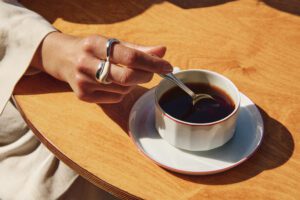
Did you encounter any challenges whilst incorporating Salmon Gold into your supply chain? If so, how did you overcome them?
We had the opportunity to be more involved in the process of refining the material and ensuring it was traceable from start to finish. With the majority of our products, our suppliers are buying precious metals that meet our alloy and recycled content expectations but we are not directly involved in that process. With Salmon Gold, we were able to work with the refiner MKS PAMP (Produits Artistiques Métaux Précieux), renowned for its expertise in refining and minting precious metals products. By leveraging MKS PAMP’s Provenance™ traceability solution, the gold was individually batch refined to maintain full traceability while ensuring the purity of the gold. MKS PAMP then shipped the gold to our designated supplier who crafted the final jewellery pieces.
How did this project encourage a cross-industry collaboration? After this experience would you consider partnering with other industries to reduce impact on your value chain?
The entire partnership with Regeneration is a cross-industry partnership that we couldn’t accomplish without their involvement. This type of collaboration is part of our long-term plans both through our continued support of the Regeneration initiative and through our active membership in organisations like the Initiative for Responsible Mining Assurance (IRMA). Our participation in IRMA allows us to add our voice along with companies and organisations from other industries and sectors in a collective call for more responsible mining practices of all mined materials. We know that we can go further, faster, if we work together.
Looking forward, what is your immediate focus for creating positive change?
We have identified long-term goals to achieve by 2030 across four key impact areas: people, planet, product, and philanthropy – because we are committed to making a positive impact in the fine jewellery industry and within our community. We have also aligned our ambitions with international best practices and frameworks. A few highlights include:
- Becoming climate positive and going beyond carbon neutral in our value chain by working to remove extra carbon from the atmosphere through restoration and conservation projects where we and our suppliers operate. This will include programs which prioritise supply chain emissions reduction and implement energy efficiency across operations. With the increasing urgency and impacts of climate change, the ultimate goal is to take out more carbon from the atmosphere than Mejuri and its suppliers are producing.
- Advancing circularity: we will design products and packaging with the full lifecycle in mind, creating circular pathways such as repair, resale, and recycling. Our Poly Bag Recycling Program, an initiative to reduce single-use plastic, has already collected and recycled over 1500 lbs!
- Achieving 100% traceability of precious materials: We will continue to educate customers about the origins of their responsibly sourced products, from the precious materials used to the location of craftsmanship.
LEARN MORE ABOUT BUTTERFLY MARK CERTIFIED MEJURI
< Back



